A wrap-up of posts published on Maven’s Notebook this week …
Note to readers: Sign up for weekly email service and you will receive notification of this post on Friday mornings. Readers on daily email service can add weekly email service by updating their subscription preferences. Click here to sign up!
This week’s featured articles …
FEATURE: How Wildfire-damaged Plastic Pipes Contaminate Drinking water – and What We Can Do About It

Written for Maven’s Notebook by Robin Meadows
The first time a reporter asked public health researcher Gina Solomon if wildfires could contaminate drinking water, she told them it wasn’t a concern. The second time a reporter brought this up, she learned that it was. Tap water collected after the 2017 Tubbs Fire in Santa Rosa, California had just tested positive for toxicants including benzene, a carcinogen, and other volatile organic compounds (VOCs). The latest evidence links these contaminants with plastic pipes.
“The whole issue of benzene and VOC contamination was a stunner to me and many public health experts,” says Solomon, an occupational and environmental health physician who is a principal investigator at the Oakland-based Public Health Institute.
Click here to read this article.
WEBINAR SUMMARY: Environmental governance in the Delta
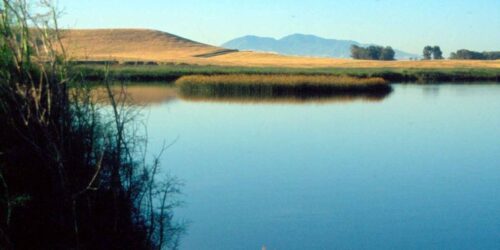 In the spring of 2022, the Delta Science Program hosted a series of lunchtime webinars focused on governance in the Sacramento-San Joaquin Delta. The first webinar, held in March, featured speakers from the federal, state, and local levels who discussed environmental governance in the Delta.
In the spring of 2022, the Delta Science Program hosted a series of lunchtime webinars focused on governance in the Sacramento-San Joaquin Delta. The first webinar, held in March, featured speakers from the federal, state, and local levels who discussed environmental governance in the Delta.
A goal of the series is to raise awareness and understanding of governance as a topic of social scientific inquiry, so each webinar will focus on a different social science framework that can be used to understand Delta governance. The framework for this webinar’s panel is environmental governance, which broadly refers to the processes, structures, and institutions within which decision-making and action for the Delta environment occur.
Click here to read this article.
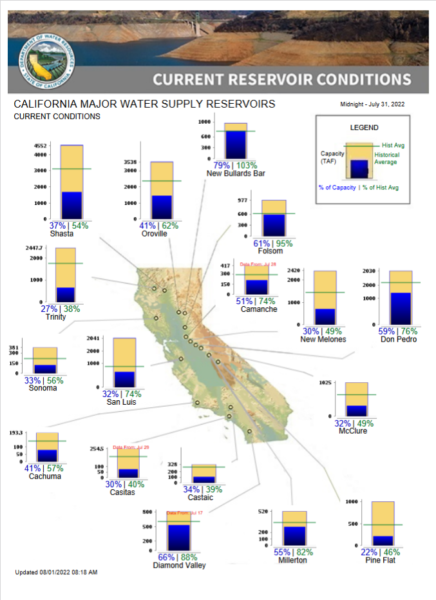 MONTHLY RESERVOIR REPORT for August 1
MONTHLY RESERVOIR REPORT for August 1
With two months left in this water year (WY), California’s federal and State water systems will undoubtedly endure and avoid irreparable harm, all things considered. This WY, at least relative to past years, has thankfully not led to calamitous water news. That being said, our thoughts and prayers are with the brave people of Kentucky!
Currently, total combined federal reservoir storage remains around 60% of normal which may surprise a lot of people ensconced in drought rhetoric.
Return to top
In California water news this week …
Water use in California dips, but still short of Newsom’s goal
 “Californians used less water in June but are still falling short of the 15% mark set by Governor Gavin Newsom. According to numbers released Tuesday by the State Water Resources Control Board, Californians cut water usage by 7.5% in June compared to June 2020. However, between July 2021 and the end of June 2022, water usage dipped by just 2.7%. Given the relatively slight drop in water use and the increasingly dire picture of the Golden State’s drought, Newsom convened a panel with local water leaders for the second time in as many months to point out the importance in continuing to use less water. “We are dealing with a changed climate in California that demands we reimagine not just how we use water, but how we capture, store and distribute it throughout the state,” said Newsom. ... ” Read more from the Courthouse News Service here: Water use in California dips, but still short of Newsom’s goal
“Californians used less water in June but are still falling short of the 15% mark set by Governor Gavin Newsom. According to numbers released Tuesday by the State Water Resources Control Board, Californians cut water usage by 7.5% in June compared to June 2020. However, between July 2021 and the end of June 2022, water usage dipped by just 2.7%. Given the relatively slight drop in water use and the increasingly dire picture of the Golden State’s drought, Newsom convened a panel with local water leaders for the second time in as many months to point out the importance in continuing to use less water. “We are dealing with a changed climate in California that demands we reimagine not just how we use water, but how we capture, store and distribute it throughout the state,” said Newsom. ... ” Read more from the Courthouse News Service here: Water use in California dips, but still short of Newsom’s goal
Dan Walters: Can Newsom finally win long Delta water conflict?
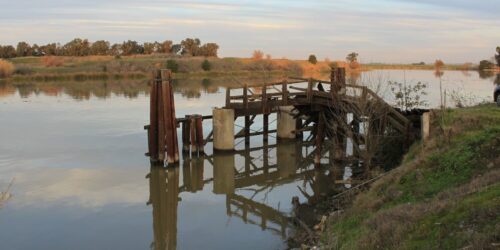 “Will the fifth time be the charm for California’s decades-long effort to replumb the Sacramento-San Joaquin Delta so that more Northern California water can be transported to Southern California? Don’t count on it. Last week, the state Department of Water Resources released a draft environmental impact report on the latest iteration of the 57-year-long effort to change the Delta’s role in water supply, a 45-mile-long tunnel officially named the “Delta Conveyance.” The 3,000-page document immediately drew the responses that have accompanied past versions — big municipal and agricultural water agencies were in favor of it because it would, they hope, increase water deliveries south of the Delta, and environmentalists were against it, saying it would further damage the Delta’s already bruised ecosystem. … ” Read more from Cal Matters here: Dan Walters: Can Newsom finally win long Delta water conflict?
“Will the fifth time be the charm for California’s decades-long effort to replumb the Sacramento-San Joaquin Delta so that more Northern California water can be transported to Southern California? Don’t count on it. Last week, the state Department of Water Resources released a draft environmental impact report on the latest iteration of the 57-year-long effort to change the Delta’s role in water supply, a 45-mile-long tunnel officially named the “Delta Conveyance.” The 3,000-page document immediately drew the responses that have accompanied past versions — big municipal and agricultural water agencies were in favor of it because it would, they hope, increase water deliveries south of the Delta, and environmentalists were against it, saying it would further damage the Delta’s already bruised ecosystem. … ” Read more from Cal Matters here: Dan Walters: Can Newsom finally win long Delta water conflict?
Desert groundwater agency to pay $8,500 per acre-foot for valley water rights
“The Indian Wells Valley Groundwater Authority in eastern Kern County has signed a “letter of intent” to buy the rights to 750 acre feet of state water for $6,396,000 from a State Water Project contractor in Kings County. The purchase is part of the authority’s plan to bring that overdrafted groundwater basin into balance. The seller is Utica J.L.J. LLC, which purchased the Jackson Ranch and is developing a truck stop and industrial center on 400 acres at Utica Avenue and Interstate 5, just south of Kettleman City. If approved by the groundwater authority, Dudley Ridge Water District and the Department of Water Resources, this would be a permanent water sale – not a one-time purchase. … ” Read more from SJV Water here: Desert groundwater agency to pay $8,500 per acre-foot for valley water rights
Worsening drought drives California water prices to all-time high
“California water prices are at all-time high as a severe drought chokes off supplies to cities and farms across the Golden State. The price of water on the Nasdaq Veles California Water Index touched $1,144.14 an acre-foot on June 27 — up 56% since the start of the year. The index tracks the average price of water-rights transactions in five markets in the state. In some pockets of California, water is even more costly — hovering around $2,000 an acre-foot in the Westlands region, according to Sarah Woolf, president of Water Wise, a water brokerage and consultancy based in Fresno. Comprising more than 1,000 square miles of farmland in Central Valley, the Westlands is the largest agricultural water district in the US. … ” Read more from Bloomberg here: Worsening drought drives California water prices to all-time high
As our climate permanently changes, how is California fighting aridification?
“Climate change has had a major impact across the world, specifically in California, one example of it has been the increasingly disastrous wildfires and drought issues we see today. With aridification, or the gradual change to a drier climate, changing the state, it does leave many wondering what can be done to limit its effects on Californians. The stricter statewide regulations on water, the state has shown a willingness to take the situation seriously–but the recent resignation of a California drought official did put into question just how urgent California officials are viewing aridification. Today on AirTalk, we discuss the state’s handling of aridification with State Water Resources Control Board chair, E. Joaquin Esquivel and Peter Gleick, co-founder & senior fellow at the Pacific Institute.” Listen at KPCC here (18:46): As our climate permanently changes, how is California fighting aridification?
Reclamation and U.S. Fish & Wildlife Service launch innovative plan to aid winter-run Chinook salmon amid extreme drought
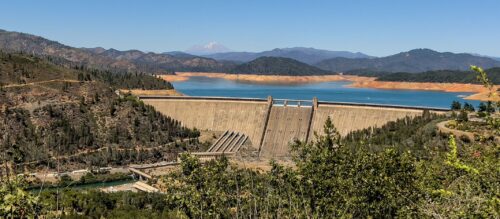 “The Bureau of Reclamation and U.S. Fish & Wildlife Service are partnering to protect winter-run Chinook salmon in a crucial year of their life cycle at the Livingston Stone National Fish Hatchery and third consecutive drought year in California. The Service operates the hatchery while Reclamation provides water, power, and funding to support operations and maintenance of the facility. Behind the scenes, water managers, fish biologists, and project managers from Reclamation and the Service have been working together to best meet critical water needs anticipated during this unprecedented drought. During years of average or greater precipitation, water quality at LSNFH is generally suitable for salmon production. However, as water temperatures from Shasta Lake are expected to be elevated this year due to the lake’s low level, Reclamation and the Service have installed several temporary water chilling units to cool and stabilize the water supply to the hatchery. … ” Read more from the Bureau of Reclamation here: Reclamation and U.S. Fish & Wildlife Service launch innovative plan to aid winter-run Chinook salmon amid extreme drought
“The Bureau of Reclamation and U.S. Fish & Wildlife Service are partnering to protect winter-run Chinook salmon in a crucial year of their life cycle at the Livingston Stone National Fish Hatchery and third consecutive drought year in California. The Service operates the hatchery while Reclamation provides water, power, and funding to support operations and maintenance of the facility. Behind the scenes, water managers, fish biologists, and project managers from Reclamation and the Service have been working together to best meet critical water needs anticipated during this unprecedented drought. During years of average or greater precipitation, water quality at LSNFH is generally suitable for salmon production. However, as water temperatures from Shasta Lake are expected to be elevated this year due to the lake’s low level, Reclamation and the Service have installed several temporary water chilling units to cool and stabilize the water supply to the hatchery. … ” Read more from the Bureau of Reclamation here: Reclamation and U.S. Fish & Wildlife Service launch innovative plan to aid winter-run Chinook salmon amid extreme drought
State can seek environmental safeguards for Oroville Dam beyond federal regulations, California Supreme Court rules
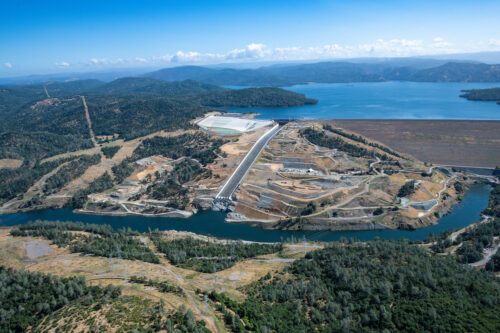
“The state Supreme Court allowed local governments and conservation groups Monday to ask the state for further safety measures and environmental safeguards at the Oroville Dam despite federal authority to license the facility, where a breach and spill forced 188,000 people to evacuate their homes in 2017. The ruling will not interrupt operations at the nation’s tallest dam, a 770-foot structure on the Feather River in Butte County. But the 5-2 decision enables California water officials to conduct additional review, under state environmental laws, of the dam and other federally regulated water projects. “This has far-reaching consequences,” said E. Robert Wright, a Sierra Club attorney whose clients in the case also included the Center for Biological Diversity and Friends of the River. ... ” Read more from the San Francisco Chronicle here: State can seek environmental safeguards for Oroville Dam beyond federal regulations, California Supreme Court rules
No ‘coordinated scheme’ behind California’s hydroelectric project reviews
“States do not lose their right to impose conditions on federally licensed hydroelectric projects by allowing the applicants to withdraw incomplete proposals shortly before the state’s window to act on them expires, a federal appeals court held. The 9th U.S. Circuit Court of Appeals overturned three orders of the Federal Energy Regulatory Commission, which had found California had waived its one-year right to impose conditions – known as a Section 401 certificate – by engaging in a “coordinated scheme” with applicants seeking to replace their expired licenses for hydroelectric power projects along the Yuba, Bear and Merced rivers. … ” Read more from Reuters News here: No ‘coordinated scheme’ behind California’s hydroelectric project reviews
Court victory for clean water and state regulators in California
“Today, a panel of judges from the U.S. Court of Appeals for the Ninth Circuit overruled the Federal Energy Regulatory Commission (FERC), re-establishing California’s right to protect water quality in the Yuba, Bear, and Merced River Watersheds for the next 40 years. One of FERC’s primary duties is licensing and inspecting private, municipal, and state hydroelectric projects. As part of this licensing process, Section 401 of the federal Clean Water Act requires license applicants for hydroelectric projects to request that the state and Tribal Nations with certification responsibilities certify that new licenses will protect water quality as required by state law. The Clean Water Act gives states a year to act on certification. In the three cases, the applicants for certification withdrew their requests before one year expired. FERC had found that the California State Water Resources Control Board’s acceptance of the applicants’ withdrawals, including perfunctory emails and comments outlining options, showed that the state was complicit in circumventing the one-year rule. … ” Read more from YubaNet here: Court victory for clean water and state regulators in California
Public comment period opens for additional resubmitted groundwater sustainability plans with ‘incomplete’ determinations
 “On January 28, 2022, the Department released eight Incomplete determinations on groundwater sustainability plans (GSPs) developed by local agencies to meet the requirements of the Sustainable Groundwater Management Act (SGMA). These basins were given 180 days to address deficiencies and resubmit their revised GSPs to the Department for review. The revised GSPs in response to the Incomplete determination have been resubmitted to the Department and are now posted on the DWR SGMA Portal. These plans are open to public comment for 60 days after the posted date. Below in the table are links to the submitted plans, counties they cover, and the public comment period end date. More information about how to comment on a GSP can be found in the public comment factsheet, available in English and Spanish. Please note that a SGMA Portal account is not required to submit a public comment. … ” Read more from the Department of Water Resources via Maven’s Notebook here: Public comment period opens for additional resubmitted groundwater sustainability plans with ‘incomplete’ determinations
“On January 28, 2022, the Department released eight Incomplete determinations on groundwater sustainability plans (GSPs) developed by local agencies to meet the requirements of the Sustainable Groundwater Management Act (SGMA). These basins were given 180 days to address deficiencies and resubmit their revised GSPs to the Department for review. The revised GSPs in response to the Incomplete determination have been resubmitted to the Department and are now posted on the DWR SGMA Portal. These plans are open to public comment for 60 days after the posted date. Below in the table are links to the submitted plans, counties they cover, and the public comment period end date. More information about how to comment on a GSP can be found in the public comment factsheet, available in English and Spanish. Please note that a SGMA Portal account is not required to submit a public comment. … ” Read more from the Department of Water Resources via Maven’s Notebook here: Public comment period opens for additional resubmitted groundwater sustainability plans with ‘incomplete’ determinations
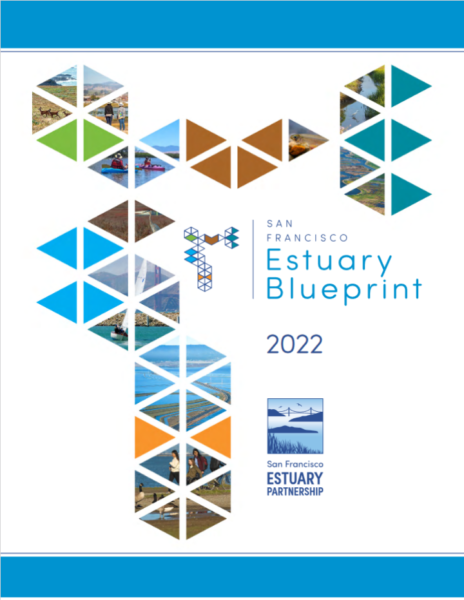 San Francisco Estuary Partnership releases 2022 Estuary Blueprint
San Francisco Estuary Partnership releases 2022 Estuary Blueprint
“The San Francisco Estuary Partnership is proud to share with you the 2022 Estuary Blueprint! The Estuary Blueprint is a collaborative, consensus-driven five-year roadmap to achieving a healthy, resilient San Francisco Estuary. This updated plan identifies the top actions needed for increased climate resilience, improved water quality for animals and people, healthier habitats and wildlife, and thriving human communities. The 2022 Estuary Blueprint aligns priority actions with Plan Bay Area, Bay Adapt, the Delta Plan, the Water Quality Control Plan for the San Francisco Bay Basin, the San Francisco Bay Joint Venture’s Implementation Plan, and many other regional plans.” From the San Francisco Estuary Partnership: Estuary Blueprint 2022
American Cruise Lines to offer cruises through the Californian Delta
“American Cruise Lines have announced their first California cruise through the California Delta, exploring San Francisco, Napa Valley and the San Joaquin Valley. According to the news release, operating round trip, the cruise will take guests from San Francisco into Wine Country along the Napa River. It will also take guests through the San Francisco Bay, San Pablo Bay, and the San Joaquin River. The new cruise line will be eight days with stops in San Francisco, Napa, Valley, Stockton, and Sacramento. … ” Read more from Fox 40 here: American Cruise Lines to offer cruises through the Californian Delta
In commentary this week …
Delta tunnel — Inconvenient truths about sea level rise and salinity intrusion
Deirdre Des Jardins writes, “The Delta tunnel Draft Environmental Impact Report (DEIR) has a new Sea Level Rise Study in Technical Appendix 5A-F. The study was done with Bay-Delta SCHISM, a 3-D hydrodynamic model of the San Francisco Bay and Delta. The new SCHISM study has limitations, in that it assumes that Delta levees are raised to keep up with sea level rise. However, the study is useful in showing how salinity will increases with sea level rise, and how much additional outflow would be needed to repel salinity. ... ” Read more from the California Water Research blog here: Delta tunnel — Inconvenient truths about sea level rise and salinity intrusion
Environmental Impact Report on Delta afflicted with tunnel vision
Columnist Michael Fitzgerald writes, “Like Godzilla attacking Tokyo, the Delta tunnel periodically revives and menaces the Delta and Stockton with destruction. Now, the monster is back, renamed the “Delta Conveyance.” Where is the Science Patrol when you need them? Not in the draft Environmental Impact Report released Wednesday by the Department of Water Resources. The 3,000 page document is chock full of scientific data showing the tunnel will be bad for the Delta – and perversely concludes everything will be just fine. “DWR does good research and good reports,” said Barbara Barrigan Parilla of Restore the Delta. “Then they write conclusions that do not match the data. It’s almost as if some political expert comes in and writes the conclusions.” … ” Read more from Stocktonia here: Environmental Impact Report on Delta afflicted with tunnel vision
Editorial: Delta tunnel plan raises more questions than it answers
The San Jose Mercury News editorial board writes, “Gavin Newsom’s vision for solving California’s vexing water challenges still raises more questions than it answers. It’s hard to determine from the release Wednesday of a 3,000-page environmental review of the governor’s plan whether a tunnel under the Sacramento-San Joaquin River Delta makes sense scientifically, politically or financially. Addressing those questions in a timely fashion must be among the governor’s and state water department’s highest priorities. This dithering must not continue. Climate change is exacerbating California’s long-standing water shortages. With every passing day, the state’s ability to ensure a reliable source of clean drinking water for urban dwellers and farmers diminishes. For 40 years, since voters rejected Gov. Jerry Brown’s plan for a peripheral canal in1982, California leaders have failed to come up with an environmentally sound alternative. … ” Read more from the San Jose Mercury News here: Editorial: Delta tunnel plan raises more questions than it answers
California should build infrastructure, not shame water users
Steven Greenhut, Western region director for the R Street Institute, writes, ” … The state always has been plagued by alternating droughts and floods. “California summers were characterized by the coughing in the pipes that meant the well was dry, and California winters by all-night watches on rivers about to crest,” wrote Joan Didion in her 1977 essay, “Holy Water.” Living near California’s last undammed river, I’ve spent long nights watching the Cosumnes overcome the aging levees. Counterintuitive as it sounds, policy makers spend too much time worrying about how much water Californians use to run their households – and too little time figuring out how to bring more water into our system. The state hasn’t built significant water infrastructure since Didion penned that essay – when the state had 17.6-million fewer residents. … ” Read the full commentary at the OC Register here: California should build infrastructure, not shame water users | Read via the Daily Breeze
Calif.’s great water experiments have failed. It’s time for real solutions.
William Bourdeau, executive vice president of Harris Farms, director of the Westlands Water District, and chairman of the Valley Future Foundation, writes, “As California’s prolonged drought continues, the State is at a crossroads. Recent headlines have been dominated by devastating wildfires and a growing number of the State’s poorest communities without water. These catastrophic conditions demand answers and solutions from our leaders. A recent report from the Public Policy Institute of California sheds light on the fact that, despite good intentions, efforts to balance California’s needs for water from the Sacramento-San Joaquin Delta and protection of at-risk native fish species, our efforts have entirely failed. Both water supplies and species abundance have continued to decline at rates that are unacceptable. … ” Read more from the San Joaquin Valley Sun here: Calif.’s great water experiments have failed. It’s time for real solutions.
Thirsty? What was derided as ‘toilet-to-tap’ is key to California’s water future
Columnist Terri Sforza writes, “Many of you have apparently stopped brushing your teeth in the shower. Way to go! As drought closes in, “water police” patrol many parts of Orange County and conservation is a battle cry, there are some encouraging signs both statewide and locally. Californians did better at tightening the taps in June: Residential use was down to about where it was in 2019, which was a wet year, and we used 7.6% less water this June than we did in June 2020, new data from the State Water Resources Control Board show. But don’t get too self-congratulatory. Our cumulative water savings was only 2.7% when looking at the 12 months ending in June compared to the same period in 2020, thanks to a ravenously thirsty spring. We’ll tell you more about how your individual O.C. cities and water districts did in coming days, but in the meantime, there’s this to consider: O.C. is pushing more water in to its vast groundwater basin, and is pumping less water out, as compared to last year. ... ” Continue reading at the San Jose Mercury News here: Thirsty? What was derided as ‘toilet-to-tap’ is key to California’s water future | Read via the OC Register
Mixed messages in California concerning water needs
Ron Fink, retired from the aerospace industry, writes, “It’s really difficult to try to keep up with the politics of saving the earth in California. The last couple of years have seen a shortfall in rain/snow melt to fill made-made water storage lakes in California and most of the western states; this has created a water shortage. Meanwhile environmental groups have continued to demand that what little water that’s left be released to save the fish habitat. And they have opposed efforts to convert ample sea water off the California coastline for use as drinking water. … ” Read more from Noozhawk here: Mixed messages in California concerning water needs
Unsafe drinking water a huge problem in rural California. State regulators are to blame
The Fresno Bee editorial board writes, “California officials love to proclaim how the state would be the world’s fifth-largest economy if it was its own nation. But there is one particular problem dulling that sheen. Far too many people in this rich, tech-savvy state don’t have clean, safe drinking water coming out of their home taps. In fact, it is not a stretch to say the situation in certain locales is worse than what is found in some developing nations. The most acute problems involving polluted water or water-system failures occur in the San Joaquin Valley and the Inland Empire. ... ” Read more from the Fresno Bee here: Unsafe drinking water a huge problem in rural California. State regulators are to blame
Natural drought cycles: California water mirage is slip, sliding away
Dennis Wyatt, editor of the Manteca Bulletin, writes, “Manteca outlawing the use of Slip ‘n’ Slides? It’s un-American. What we need or more dams or — better yet — more hairbrained ideas to import water from British Columbia or the Mississippi River watershed into California. Forget the fact both regions are suffering from the same drought California is. Like winter storms like lined up over the Pacific during El Nino, California has been getting slammed by a series of droughts. Actually, that’s not exactly true. ... ” Read more from the Manteca Bulletin here: Natural drought cycles: California water mirage is slip, sliding away
Food choices are the real drivers of water usage
Patsy Ouellette, longtime environmental advocate, writes, “Until we know what uses most of California’s water, it’s impossible to evaluate what the solution should be. On July 8, Gov. Gavin Newsom asked Californians to voluntarily cut water usage by 15 percent. On June 23, the Federal Bureau of Reclamation ordered seven western states to come up with an emergency water plan in 60 days. If they miss the deadline, the authorities will step in and impose cuts. John Entsminger, head of Southern Nevada water authority, believes “all sectors should share in the pain, which includes the biggest water users: farming and ranching.” … ” What is the most telling piece of information, though? It turns out, states Oppenlander, “60 to 70 percent of California water goes to livestock and crops to feed them.” What does this mean for us? … ” Continue reading at the Bakersfield Californian here: Food choices are the real drivers of water usage
Our Lives Depend On Water: Assembly candidate calls for 30 more desalination plants as water solution for entire state
Mindy Pechenuk, the Republican candidate for Assembly District 18, writes, “On May 12, 2022, the California Coastal Commission, including Governor Newsom’s appointees, unanimously voted down the plan for construction of a desalination plant at Huntington Beach that would convert Pacific Ocean water into 50 million gallons of freshwater per day, enough water for 400,000 Californians. The people of the state of California come first. Our lives depend on water. We must set aside our differences and unite together, irrespective of party. We can and must create the momentum to stop the environmentalist lunatics that are putting the citizens of California and the nation’s food supply at risk. We can no longer tolerate policies which make the citizens of this state “an endangered species.” Gavin Newsom must immediately fire the four Coastal Commissioners who blocked the new facility which he claimed he supports. … ” Read more from the California Globe here: Our Lives Depend On Water: Assembly candidate calls for 30 more desalination plants as water solution for entire state
It’s time for Army Corps of Engineers to investigate the feasibility of moving water West
Don Siefkes of San Leandro writes, “Numerous letters (including mine of June 30) have commented recently on the possibility of moving water from the Mississippi River to the Colorado River at Lake Powell (Glen Canyon dam on the Utah/Colorado border) and then downstream to Lake Mead (Hoover Dam/Las Vegas) and on through Arizona and beyond. Some of these letters are supportive and some not. The whole point of suggesting this solution to the Southwest’s water problem is to generate a public demand to the Army Corps of Engineers to investigate the feasibility of such a project. I suggested diverting 250,000 gallons/second, which is only about 5% of the flow on the lower Mississippi south of the Old River Control Structure (ORCS) in Central Louisiana 300 miles above New Orleans. … ” Read more from the Desert Sun here: It’s time for Army Corps of Engineers to investigate the feasibility of moving water West | Read via Yahoo News
New poll cleverly conflates climate change, drought, wildfires, oil and gas industry
Katy Grimes, the Editor of the California Globe, writes, “A new poll by the Public Policy Institute of California cleverly conflates climate change, drought, wildfires and the oil and gas industry through dextrous questions and weighted demographics. Here’s the PPIC’s opening salvo: “With California facing a severe drought and wildfire season, public awareness has risen of the impact of climate change as well as state policies to reduce greenhouse gas emissions. A sharp increase in petroleum prices has led to discussions about expanding oil production and renewable energy sources.” In one sentence, the PPIC asserts that because of the severe drought and current wildfires, climate change awareness is more prevalent. And just the placement of the second sentence, makes it appear to imply costly oil and gas prices are causing the state to turn to renewable energy. Very clever. ... ” Read more from the California Globe here: New poll cleverly conflates climate change, drought, wildfires, oil and gas industry
Will the Supreme Court gut the Clean Water Act?
Dan Farber, Berkeley Law, writes, “What wetlands and waterbodies does the Clean Water Act protect? Congress failed to provide a clear answer when it passed the statute, and the issue has been a bone of contention ever since. The Biden Administration is in the process of issuing a new regulation on the subject. Normally, you’d expect the Supreme Court to wait to jump in until then. Instead, the Court reached out to grab Sackett v. EPA, where landowners take a really extreme position on the subject. Not a good sign. … The landowners in Sackett take a position that would restrict federal jurisdiction even more than Scalia or Trump. In their brief, they argue for a two-step test ... ” Read more from Legal Planet here: Will the Supreme Court gut the Clean Water Act?
Congressional passage of inflation reduction act is critical to tackling the West’s water crisis
“This week the U.S. Senate is poised to vote on the Inflation Reduction Act, which addresses climate change, health care and inflation. If passed, the bill would invest $369 billion in climate solutions and put the U.S. on a path to a 40% reduction in greenhouse gas emissions by 2030. … Chris Kuzdas, co-lead of the Water for Arizona coalition and Senior Manager, Climate Resilient Water Systems at Environmental Defense Fund, issued the following statement about the critical need to pass the legislation: “The Southwest is grappling with the worst megadrought in 1,200 years and staring down the possibility of a major water supply collapse on the Colorado River. … ” Read more from the EDF here: Congressional passage of inflation reduction act is critical to tackling the West’s water crisis
Many farmers, ranchers struggling to hold on through drought
Vincent “Zippy” Duvall, the 12th president of the American Farm Bureau Federation, writes, “Mother Nature can be a tough business partner. Storms can come in an instant, undoing months—or even years—of hard work and planning. But it’s not just the sudden, sweeping natural disasters that are devastating. Sometimes Mother Nature is slow and unforgiving. This is something our friends out West know all too well as they face another year of intense drought—a drought that is dragging on and edging eastward. Nearly 70% of the U.S. is facing abnormally dry conditions, or worse, according to the latest reports. For some areas, folks are praying for summer rain, while others will do their best to hold on in hopes of more snowfall this winter. But a heartbreaking number are facing tough decisions already, from selling off herds to plowing under withered crops. … ” Read more from the Farm Bureau here: Many farmers, ranchers struggling to hold on through drought
Wildfire season is here. California needs to fight back smarter
Dave Winnacker, fire chief of the Moraga-Orinda Fire District, and Donnie Hasseltine, CSO of Xenon Partners, write, “With the Oak Fire now blazing across over 19,000 acres of Northern California, it is clear: Fire season is here — and with it, comes the very real potential for life and property loss. Although technological advances are improving firefighting capabilities, most innovations focus on identifying and responding to fires after they start. But given wildfires will only get worse in the hotter, drier future, solely being reactive to them isn’t a winning strategy. California needs to fight fire smarter. … ” Read more from the San Francisco Chronicle here: Wildfire season is here. California needs to fight back smarter
Why forest managers need to team up with Indigenous fire practitioners
Don Hankins, professor of geography and planning at Cal State Chico; Scott Stephens, professor of fire science at UC Berkeley; and Sara A. Clark, partner at Shute, Mihaly & Weinberger, a public interest environmental law firm, writes, “The forests of the Western United States are facing an unprecedented crisis, besieged by wildfires and climate change. There is a precedent for part of the solution, though: intentional burns such as those set by Indigenous peoples. Many of our forested ecosystems depend on fire. They evolved with frequent blazes touched off by humans or lightning. However, active stewardship was disrupted, first by the genocide and forced removal of Indigenous peoples, then by the criminalization of cultural burning activities, and finally by the misguided efforts of state and federal governments to immediately suppress all ignitions. We are left with significantly altered forest structures and dangerous fuel loads, both of which significantly contribute to the current wildfire crisis. Both Western science and Indigenous knowledge point to the need to return fire as a keystone process, as critical to ecosystem health as sunlight and rain. … ” Read more from the LA Times here: Why forest managers need to team up with Indigenous fire practitioners
How climate change is wrecking the spectacular landscape where California meets Oregon
Sacramento Bee Senior Associate Editor Jack Ohman writes, “The drive from Portland to Sacramento on Interstate 5 is about 10 hours or so. It’s mostly scenic and borders on spectacular. In Oregon, you’ll see the McKenzie River in Eugene, Mount Ashland and the Rogue River Valley before you come to California’s Mount Shasta, Castle Crags, the valley dropping down into in the Siskiyous, Lake Shasta and lots of beautiful vistas in between. Right now, you will also see the devastating effects of climate change. I make this drive routinely, and it never disappoints. Yet when I made it last week, it confronted me with rapidly encroaching catastrophe. … ” Read more from the Sacramento Bee here: How climate change is wrecking the spectacular landscape where California meets Oregon
Don’t hamstring carbon removal
Eric Biber, a specialist in conservation biology, land-use planning and public lands law, writes, “Assessments by the IPCC have made clear that the most feasible way for the world to meet its target of restricting climate change to below two degrees Celsius of warming includes rapid and massive expansion of carbon removal technology – technology that would extract carbon dioxide and permanently sequester that carbon dioxide underground. California has long been a leader in decarbonization, but proposed legislation in Sacramento would hamstring California’s efforts to advance carbon removal. … ” Read more from the Legal Planet here: Don’t hamstring carbon removal
In regional water news this week …
Two new decisions on the Potter Valley diversion from the Eel River
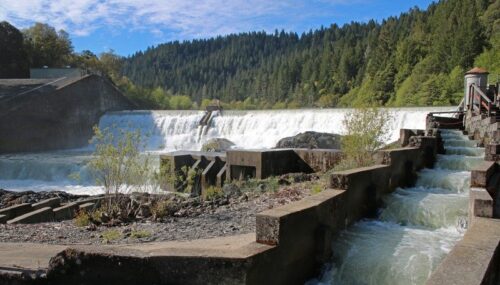
“This week, the Federal Energy Regulatory Commission (FERC) issued two decisions that water interests in the Eel and Russian River watersheds have been waiting on for months. On Wednesday, the Commission approved a drastic reduction in the flow of water through the Potter Valley hydropower project into the East Branch of the Russian River. … The Commission also delivered an ambiguous opinion refuting the claims of environmental groups that the Commission has the authority to amend the Potter Valley Project’s new annual license to include more protection measures for wildlife. ... ” Read more from the Redheaded Blackbelt here: Two new decisions on the Potter Valley diversion from the Eel River
Cutback in Eel River diversions expected to prompt new curtailments for Russian River water rights
“Federal energy regulators say Pacific Gas & Electric can begin drastically reducing Eel River water diversions bound for Lake Mendocino, which will likely result in additional curtailments of water rights for hundreds of landowners, ranchers and communities in the Russian River watershed. The new flow regime, approved last week after more than two months of consideration by the Federal Energy Regulatory Commission, authorizes PG&E to divert as little water as it did last year even though there is almost 50% more water in Lake Pillsbury than there was at the same time last year. But PG&E is under pressure from state and federal wildlife agencies to improve conditions for federally listed salmon and steelhead trout below Scott Dam and Lake Pillsbury and, thus, is seeking to preserve a pool of cold water in the lake for release when necessary to enable fish survival. … ” Read more from the Santa Rosa Press Democrat here: Cutback in Eel River diversions expected to prompt new curtailments for Russian River water rights
Salmon, steelhead conservation groups plan to sue PG&E, allege ESA violations
“As Pacific Gas & Electric (PG&E) moves toward decommissioning the Potter Valley Project, a coalition of environmental groups is readying materials to sue the power company over operations the groups say harm the Eel River’s salmon and trout populations and violate the federal Endangered Species Act (ESA). The Potter Valley Project is a hydroelectric power plant — more than a century old — designed to generate power and divert water flows from the Eel River to the Russian River. The plant utilizes two dams: Cape Horn Dam at the Van Arsdale Reservoir and Scott Dam at Lake Pillsbury. The future of these dams remains murky and controversial, as government agencies, nonprofits, tribal nations, agricultural stakeholders, and other California citizens all have a vested interest in water rights and land stewardship in the two watersheds. For example, some Lake County residents oppose removing Scott Dam because of Lake Pillsbury’s community significance and value as a reservoir. … ” Read more from the Mendocino Beacon here: Salmon, steelhead conservation groups plan to sue PG&E, allege ESA violations
Sonoma County proposes rule changes for well permits
“In response to evolving California case law that requires local governments to protect the health of rivers and other “public trust resources,” the Board of Supervisors will consider new standards for permit applications to drill wells in Sonoma County, according to a press release from Bradley Dunn, Permit Sonoma’s policy manager. The Aug. 9 board meeting will include a public hearing on the proposed amendment to the county’s well ordinance. The amendment would create a new framework that allows Permit Sonoma to evaluate environmental impacts while reviewing applications for permits to drill new or replacement groundwater wells. … ” Read more from the Kenwood Press here: Sonoma County proposes rule changes for well permits
North Yuba Water District seeks water transfer sales
“North Yuba Water District and its general manager sent a request to another regional water agency to help facilitate the transfer of as much as 15,000 acre-feet of water following a previous denial of water to its irrigation customers for the year. In emails obtained by the Appeal, Jeff Maupin, general manager of North Yuba Water District, sent a transfer proposal dated July 15 to South Feather Water & Power Agency General Manager Rath Moseley. According to the letter sent by Maupin, North Yuba was informing Moseley and South Feather of the district’s intent to “transfer up to 15,000 acre-feet (AF) of water currently stored in South Feather Water & Power Agency’s (SFWPA) Little Grass Valley Reservoir and Sly Creek Reservoir under Permit 11518.” ... ” Read more from the Appeal Democrat here: North Yuba Water District seeks water transfer sales | Read via Yahoo News
Lake Tahoe report suggests historic rise in algae and surging microplastics are reasons to take action
“UC Davis’ annual State of the Lake report on the health of Lake Tahoe has found massive changes since last year. Among them include a “collapse” of zooplankton, a dramatic rise in algae, which zooplankton eat; and a corresponding decline in the lake’s clarity. Murkier lake waters make it harder for ultraviolet rays to reach life below the surface that thrives on it. These issues also affect Lake Tahoe’s renowned blue hue. Tahoe Environmental Research Center Director Geoffrey Schladow “any one of these changes would be a big deal in a single year.” “All three occurring at once is particularly alarming and a huge opportunity to learn lessons that can be used to inform future management,” he wrote in the report. The report also indicates there’s a major human-caused problem: microplastic contamination. ... ” Read more from Capital Public Radio here: Lake Tahoe report suggests historic rise in algae and surging microplastics are reasons to take action
State regulators deny request for more water for Monterey Peninsula housing
“An effort launched more than a year ago to have state water regulators relax their order to halt illegal pumping from the Carmel River basin to allow for housing in Monterey was shot down Thursday by the head of the regulating agency. In a three-page letter to David Stoldt, the general manager of the Monterey Peninsula Water Management District, from Eileen Sobeck, the executive director of the State Water Resources Control Board, the regulator dismissed a March 2021 request by Stoldt to allow additional water hookups for a huge housing project on Garden Road in Monterey. … ” Read more from the Monterey Herald here: State regulators deny request for more water for Monterey Peninsula housing
How a Madera farmer fought a new groundwater fee — and (sort of) won
“A proposed fee system to manage irrigated land in Madera County has sparked a successful protest, leaving one groundwater agency unfunded and at least one farmer claiming the process was done with minimal notice. Officials with Madera County added fees to irrigated acreage commonly referred to as white areas — having no surface water access and not belonging to an irrigation district. Three newly formed groundwater sustainable agencies — Chowchilla Subbasin, the Madera Subbasin and the Delta Mendota Subbasin — are left with no funding for four ongoing groundwater projects required under California’s Sustainable Groundwater Management Act. It’s the County of Madera that oversees the land, said Stephanie Anagnason, director of water and natural resources for Madera County. ... ” Read more from The Business Journal here: How a Madera farmer fought a new groundwater fee — and (sort of) won
Effort to bring South Fork Kern River water to valley farmland buffeted by lawsuits, called a “joke”
“Drought cut short a pilot program to bring South Fork Kern River water through Lake Isabella and down 60 miles to farmland northwest of Bakersfield. Now, a raft of lawsuits could upend the environmental impact report in support of the project, which has been a goal of the Rosedale-Rio Bravo Water Storage District since it bought the old Onyx Ranch in 2013. The project was doomed from the start, said one board member of the water district that led the lawsuit charge. “It’s a joke,” said John Vidovich, a board member of the Buena Vista Water Storage District, one of five entities that hold rights on the river. “They bought an abandoned farm and took river water to irrigated it and now they think they have a riparian right and can take that water all the way to Rosedale? That’s a very long reach.” ... ” Read more at SJV Water here: Effort to bring South Fork Kern River water to valley farmland buffeted by lawsuits, called a “joke”
Ridgecrest: Groundwater Authority enters agreement to plan water import pipeline
“The Indian Wells Valley Groundwater Authority board unanimously approved entering into an agreement with Provost & Pritchard Consulting Group for preparation of an imported water pipeline alignment study at their short special board meeting on the morning of July 22. For the project, Provost & Pritchard proposed a budget of $449,100. At the special board meeting, IWVGA acting general manager Carol Thomas-Keefer said that the budget can be paid with the help of a $7.6 million grant which IWVGA recently secured. All work funded by the grant must be completed by April 30, 2025. … ” Read more from the Ridgecrest Independent here: Ridgecrest: Groundwater Authority enters agreement to plan water import pipeline
SoCal: Department of Water Resources denies request for additional water for wildfires
“The historic drought emergency continues with a reminder of limited water supplies statewide and difficult tradeoffs at play. On July 1, 2022, MWD requested an additional allocation of human health and safety water for wildfire prevention in areas designated as Very High Fire Hazard Severity Zones – including all LVMWD’s service area. Unfortunately, the request was denied by DWR in a joint letter with the California Department of Forestry and Fire Protection (CAL FIRE) to MWD on July 29, 2022. “We’re frustrated by the decision but understand the state’s challenge to balance the needs of more than 27 million people receiving water from the State Water Project, along with the real possibility of another dry year,” said David Pedersen, general manager of LVMWD. “LVMWD is pivoting towards alternate strategies to help our communities be better prepared for the threat of wildfire. We are also actively investigating other options to supplement our limited supply.” ... ” Read more from Las Virgenes Municipal Water District here: Department of Water Resources denies request for additional water for wildfires
Arizona and California farmers, targets for Colorado River cuts, draft their conservation strategy
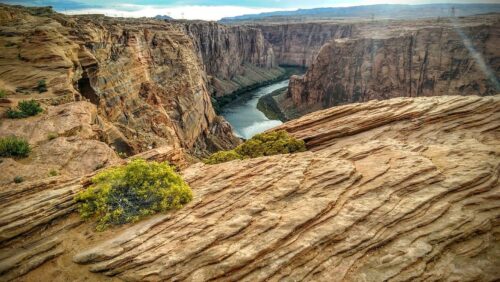 “Knowing they are targets, farmers in southern Arizona and California who receive irrigation water from the Colorado River are discussing a plan that could go a long way toward meeting a federal conservation mandate in the drying basin. With key reservoirs Mead and Powell at record lows and despite the continued decline of the Salton Sea, federal officials are demanding historic cuts in water use next year, on the order of 2 million to 4 million acre-feet, or roughly one-third of the river’s recent annual flow. Irrigation districts in Arizona’s Yuma County and California’s Imperial and Riverside counties control more of the river’s water than any other entity in the basin. The Colorado River Indian Tribes, whose reservation abuts the river, also hold significant secure water rights. A plan is now circulating among those districts to forgo 1 acre-foot of water per irrigated acre next year. In the Yuma area that amounts to a 20 percent cut, according to Tom Davis, manager of the Yuma County Water Users’ Association. … ” Read more from the Circle of Blue here: Arizona and California farmers, targets for Colorado River cuts, draft their conservation strategy
“Knowing they are targets, farmers in southern Arizona and California who receive irrigation water from the Colorado River are discussing a plan that could go a long way toward meeting a federal conservation mandate in the drying basin. With key reservoirs Mead and Powell at record lows and despite the continued decline of the Salton Sea, federal officials are demanding historic cuts in water use next year, on the order of 2 million to 4 million acre-feet, or roughly one-third of the river’s recent annual flow. Irrigation districts in Arizona’s Yuma County and California’s Imperial and Riverside counties control more of the river’s water than any other entity in the basin. The Colorado River Indian Tribes, whose reservation abuts the river, also hold significant secure water rights. A plan is now circulating among those districts to forgo 1 acre-foot of water per irrigated acre next year. In the Yuma area that amounts to a 20 percent cut, according to Tom Davis, manager of the Yuma County Water Users’ Association. … ” Read more from the Circle of Blue here: Arizona and California farmers, targets for Colorado River cuts, draft their conservation strategy
California drought 2022: Two water districts eye hefty Colorado River cuts
“Two powerful Southern California water districts are actively negotiating an agreement for hefty voluntary cuts of Colorado River supply to farmers and reduced delivery of water to greater Los Angeles, as part of urgent efforts across seven states and Mexico to stave off the collapse of the drought-stricken river system that provides drinking water and irrigation for nearly 40 million people. Responding to a June mandate from the U.S. Bureau of Reclamation for all those who rely on the river to cut 2 million to 4 million acre-feet of water usage within 60 days, Imperial Irrigation District and Metropolitan Water District officials are negotiating “around half a million, between 400,000 and 500,000 acre-feet” in combined reductions, IID general manager Enrique Martinez said on Monday. … ” Read more from The Desert Sun here: California drought 2022: Two water districts eye hefty Colorado River cuts
Crews remove boat from Sacramento River after fire
“Crews removed a boat from the Sacramento River on Wednesday after it caught on fire earlier this summer. The Sacramento Fire Department responded to the boat fire west of Sand Cove Park on June 21. In addition, the California Department of Fish and Wildlife’s Office of Spill Prevention and Responses also got to the scene when there was a concern oil might spill into the waterway.” Watch video below or click here to read at KCRA.
Burned-out boat pulled from Sacramento River. What about the other 50 in the Delta?
“The shell of the “All American,” an 85-foot boat that went up in flames in June, floated in an industrial area of the Sacramento River for the last six weeks with no one to claim it. On Wednesday morning, the ship finally left the river. A barge loaded with construction equipment moored beside the boat and began dismantling it, ripping off pieces of wood to be transported to a waste facility. Sacramento County leaders hope that extraction marks just the beginning of their new push to clear the Sacramento-San Joaquin Delta of dozens of abandoned boats cluttering up waterways. They say they can’t do it alone, and are asking state lawmakers pass a bill that would set aside $25 million to seed the cleanup work. … ” Read more from the Sacramento Bee here: Burned-out boat pulled from Sacramento River. What about the other 50 in the Delta?
Going with the flow: How aquifer recharge reduces flood risk
“On a small scale, aquifers — subsurface natural basins — have been recharged with flood waters from extreme storms for decades. Now, a new Department of Water Resources (DWR) assessment shows how Flood Managed Aquifer Recharge, or Flood-MAR, can help reduce flood risk and boost groundwater supplies across large areas of land. A climate change problem solver, Flood-MAR collects high flow flood waters from heavy precipitation or snow melt and conveys it downstream. There, the flood waters are spread across the land, creating wetland habitat or irrigating fields while also percolating to aquifers underground. The capturing of flood waters during times of peak flows lessens the risk of major flooding during heavy storms. Some of the collected water is also later redirected back to waterways to support ecosystems and riverine habitat. … ” Read more from DWR News here: Going with the flow: How aquifer recharge reduces flood risk

